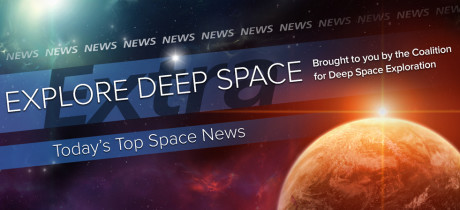In Today’s Deep Space Extra… Hubble space telescope operators express confidence they will overcome a problem with the observatory’s primary camera. China’s lunar rover offers panoramic views of the Moon’s far side. NASA’s workforce among those in the federal workforce dealing with a growing partial U.S. government shutdown.
Human Space Exploration
Universe Today (1/10): Some bacteria that accompany astronauts into space for life aboard the International Space Station are adjusting rapidly so as not to pose a threat to future human deep space exploration, according to a study carried out by researchers from Northwestern University.
Looking up: Meet General Charles Bolden, Jr.
WVXU public radio ((1/10): Former NASA administrator Charles Bolden, a former NASA astronaut and Marine aviator, addresses the challenges of future human space exploration.
Space Science
Astronomers foresee long future for Hubble
SpaceNews.com (1/10): Astronomers are confident NASA will overcome a problem with the Hubble space telescope’s primary imager, the Wide Field Camera 3, and continue operating the landmark space observatory well into the 2020s. The topic of Hubble’s future was discussed this week at a meeting of the American Astronomical Society (AAS) in Seattle. The camera in the near 29 year-old space telescope faltered earlier this week. “Have no fear, that will be up again soon,” Tom Brown, Hubble mission manager at the Space Telescope Science Institute, told the gathering.
The far side of the Moon in panorama
Spacepolicyonline.com (1/10): China has released an image from its Chang’e 4 lander/rover that shows the Moon’s far side at the South Pole Aitkin Basin in panorama. The spacecraft became the first to land on the Moon’s far side on January 2.
Other News
NASA contractors struggle without pay during government shutdown and may never see the money
Orlando Sentinel (1/10): Members of NASA’s workforce at the Kennedy Space Center (KSC), furloughed by a partial U.S. government shutdown tied to political differences between the White House and Congress over immigration and in force since December 22 gathered at NASA’s Kennedy Space Center (KSC) to learn how they might deal with the financial consequences.
Russia determined to retake driver’s seat in space exploration
TASS of Russia (1/11): Russia is determined to lead in space, according to Dmitry Rogozin, head of Roscomos, the Russian federal space agency. The objective will be revealed in a new strategy from Moscow to be announced later this year. Any notion that space is beyond politics, no longer applies, Rogozin stressed. Currently, Russia is the only nation capable of transporting astronauts into space.
China’s Moon landing boosts Trump’s Space Force
Washington Times (1/10): China last week succeeded in landing the first spacecraft, a lander/rover, on the Moon’s far side. It was a first. The achievement may spur a U.S. response, including a White House call to establish a sixth branch of the U.S. military, a Space Force.
Los Angeles Times (1/9): SpaceX plans rocket launch tests from South Texas as soon as February intended to advance a commercial deep space launch capability.

